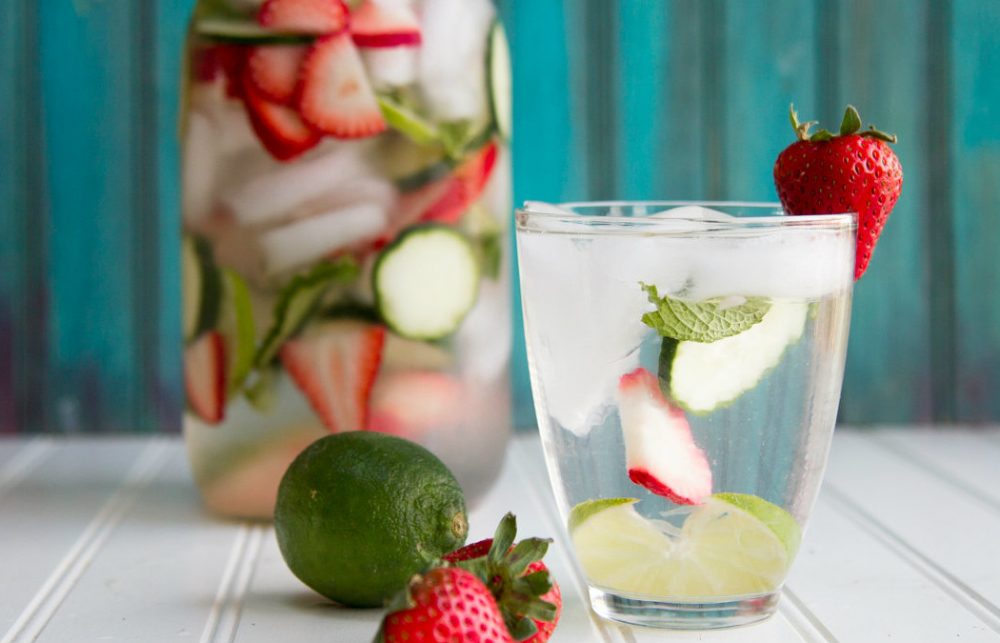Researchers at Virginia Tech have developed a new scoring method for assessing beverage intake, the Healthy Beverage Index (HBI) to evaluate overall beverage intake quality and to determine if improvements in beverage intake patterns are associated with improvements in health. A great deal of attention has been directed at sugar-sweetened beverage (SSB) intake, and a broader focus beyond just SSBs is needed.
The HBI is a 10-item scoring index that captures total energy from beverages, total fluid requirements, and recommended limits for beverage subgroups, such as low-fat milk, fruit juice, and alcohol.
The team used dietary and health data from over 16,000 adults who participated in the National Health and Nutrition Examination Surveys (2005-2010). They calculated HBIs and correlated those with cardiometabolic risk factors such as obesity/overweight, hypertension, high fasting insulin, high fasting glucose, high low-density lipoprotein (LDL) cholesterol, and high CRP.
The HBI score ranges from zero to 100, with a higher score indicating better adherence to beverage guidelines and a healthier beverage intake pattern in both men and women. People with better HBI scores had more favourable cardiometabolic outcomes. The average HBI score was 63±16 out of 100 for the sampled population in the research conducted by researchers at Virginia Tech. Their analysis considered age, sex, race/ethnicity, level of education completed, marital status, household size, totaldaily energy intake, and physical activity as possible confounding factors.
The odds of having high CRP were also lower with each 10-point higher in HBI score in this group. Irrespective of weight status, each 10-point higher HBI score was associated with 4% lower odds of having hypertension. Among all females, regardless of weight status, each 10-point higher HBI score was associated with an average 4 percent lower odds of having high fasting insulin levels.
Healthy Beverage Guidelines
Your body would be perfectly content if you drank nothing but water. You would get all the fluid you need, and you would get all of your nutrients from food. But with so many choices available, most people drink a variety of beverages. The Beverage Guidance Panel distilled its advice in the issue of the American Journal of Clinical Nutrition. Here’s one way the Panel suggests getting less than 10 percent of daily calories from beverages:
- About one-third (or about three to four cups) can come from unsweetened coffee or tea. If you flavor your coffee or tea with a lot of sugar, cream, or whole milk, then drinking less would help manage weight. If you take a pass on coffee or tea, choose water instead..
- Low-fat milk can make up another 20 percent, or about two 8-ounce glasses. Less is fine, just make sure you get your calcium from another source.
- A small glass (4 ounces) of 100% fruit juice, and no more than 1 to 2 alcoholic drinks for men or no more than 1 for women.
- Ideally, zero “diet” drinks made with artificial sweeteners, but up to 1 to 2 glasses (8 to 16 ounces) a day (this is adapted from the Beverage Guidance Panel’s original recommendation of up to 32 ounces per day).
- Ideally, zero drinks sweetened with sugar or high-fructose corn syrup, but up to a maximum of 8 ounces.
*Suggested beverage consumption pattern for a person who requires 2,200 calories per day, providing 10 percent of calories from beverages. The range listed at each level refers to the Beverage Guidance Panel’s suggested consumption range for each beverage. Caffeine is a limiting factor for coffee and tea consumption; up to 400 mg per day, or approximately 32 fluid ounces of coffee per day (can replace water). Noncalorically sweetened beverages can substitute for tea and coffee with the same limitations regarding caffeine, up to 16 fluid ounces per day (this is adapted from the Beverage Guidance Panel’s original recommendation of up to 32 fluid ounces per day).

